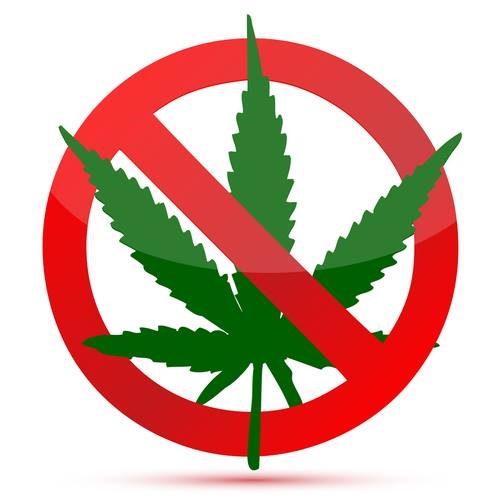Bryn Spejcher, 32, of Thousands Oaks, Calif., was convicted last month of killing her boyfriend in May 2018. According to prosecutors, she stabbed Chad O’Melia 108 times with a kitchen knife. She also stabbed herself and her dog. When police showed up, she was screaming hysterically.
Ms. Spejcher, an audiologist at UCLA Health, had no history of mental illness. Yet after psychologists diagnosed her with “cannabis-induced psychosis,” prosecutors downgraded charges from murder to involuntary manslaughter.
Healthcare practitioners report increasing numbers of young people with psychotic reactions from marijuana. Such breaks are more likely with chronic use, though one scientific review found nearly 1 in 5 users reported hallucinations or visions, and more than half experienced paranoia, after using the drug.
Yet the Health and Human Services Department brushes past marijuana’s potential for inducing psychosis in its review, published Jan. 12, that supported moving marijuana from Schedule I of the Controlled Substances Act to the less restrictive Schedule III. If you needed more evidence that Biden administration health officials don’t follow the science, here it is.
Schedule I drugs are those with no currently accepted medical use and a high potential for abuse. Examples include heroin, ecstasy and peyote. Schedule III drugs have a moderate to low potential for physical and psychological dependence. They include Tylenol with codeine, testosterone and other anabolic steroids.
HHS concludes that “the risks to the public health posed by marijuana are lower compared to other drugs of abuse” based on data of hospitalizations, emergency-room visits and overdose deaths. It’s true, smoking weed is unlikely to cause sudden death. But its effects over time may be more insidious and damaging to public health and society than those of other drugs.
An article last month in the New England Journal of Medicine, “Cannabis-Related Disorders and Toxic Effect,” details the myriad risks of marijuana use, including mental illness and cognitive difficulties. As more states have legalized marijuana, more young people are using the drug and more frequently experiencing such problems.
The pot lobby says cannabis is no more dangerous than alcohol. But THC—the psychoactive ingredient in marijuana that provides the euphoric high—binds to receptors in the brain, heart, lungs and immune system. These receptors are located in neural regions involved in memory, motor coordination, decision-making and self-control.
Marijuana temporarily impairs judgment and memory in occasional users, and chronic consumption is associated with long-term cognitive problems as well as depression, anxiety and psychosis. The drug stupefies. Studies have also linked frequent cannabis use with increased risk of heart failure, heart attack and stroke.
Too much alcohol is also bad for the heart. But pot appears more likely to cause psychological and physical dependency, judging by how many young people use it regularly.
Between 0.8% and 2% of Americans 18 to 22 reported using alcohol daily, compared with 6.3% to 11.3% for marijuana, according to the University of Michigan’s 2022 Monitoring the Future survey. Similarly, 11.3% of 19- to 30-year-olds reported using marijuana daily, compared with 4.6% for alcohol. Even more 35-year-olds consume pot every day (8.4%) than alcohol (7.5%).
The risk of cannabis-use disorder has increased over time as marijuana has become more potent. Marijuana today has four times as much THC as during the 1990s, and some products are now more than 20 times as potent. This is one reason emergency-room doctors report seeing increasing numbers of patients with uncontrolled vomiting and other symptoms of cannabis poisoning.
More toddlers are also accidentally ingesting cannabis in edible form. “We see children coming in with seizures and not breathing,” a pediatrician at Rady Children’s Hospital told the San Diego Union-Tribune last year. “They have altered mental status; they won’t wake up.” Cannabis-involved ER visits among children roughly quadrupled between early 2019 and 2022.
Increasing numbers of pregnant women use pot, unaware that THC’s crossing the placenta is harmful to fetal development. A 2019 study found THC in 22.4% of tested umbilical cords. Numerous studies have found pot use to be more common during pregnancy among blacks than whites, which is likely to exacerbate racial disparities.
Maternal marijuana use sets children up for failure before they are born. Cannabis use during pregnancy is associated with lower birth weight, developmental delays, learning disabilities, attention deficit hyperactivity disorder and emotional problems. The heads of babies born to mothers who used weed are significantly smaller, and children with very low birth weights have lower IQs. While causation hasn’t been proved, the copious research documenting these connections raises alarms—or they should.
Yet the Biden HHS report promotes the mistaken perception that pot isn’t all that dangerous, no doubt because the drug is popular among young liberals. So much for advancing “science” and “equity.” Pot destroys lives, and it’s criminal to suggest otherwise.

